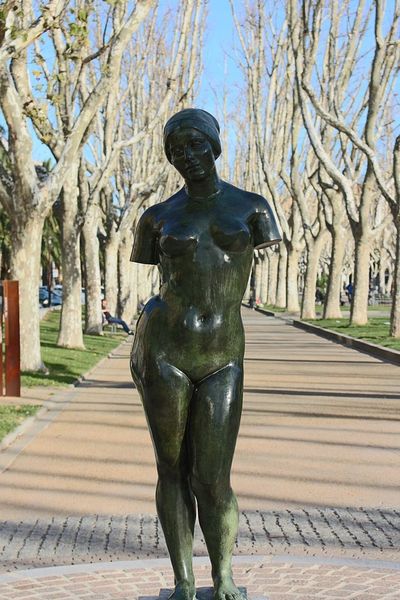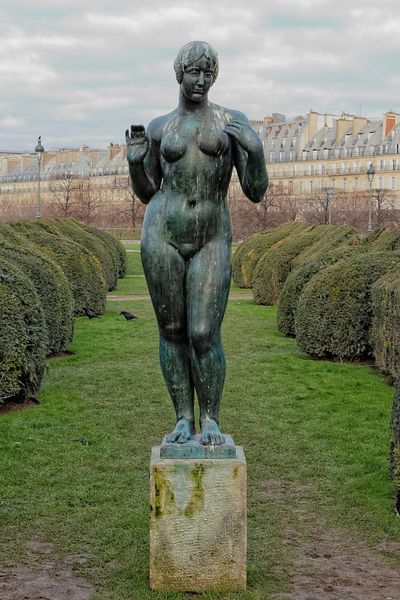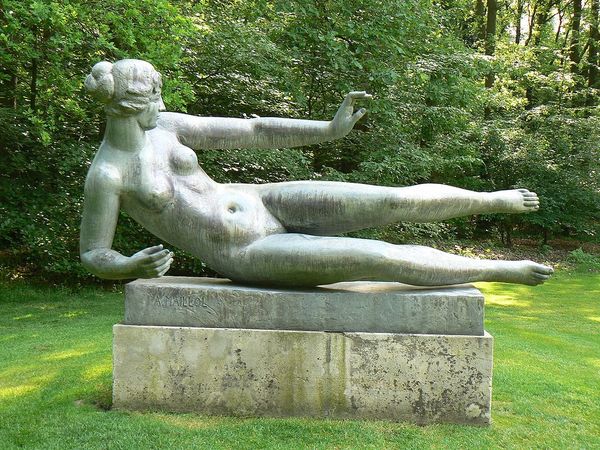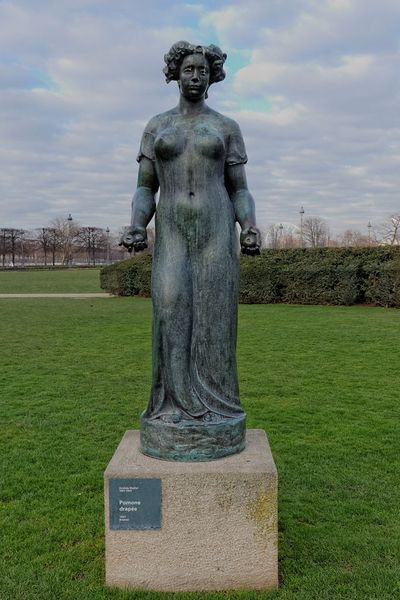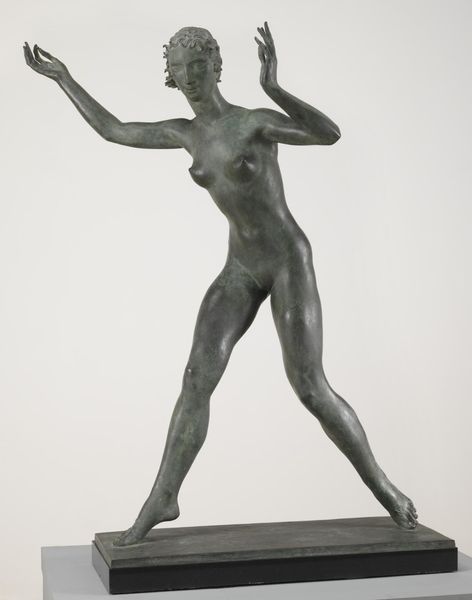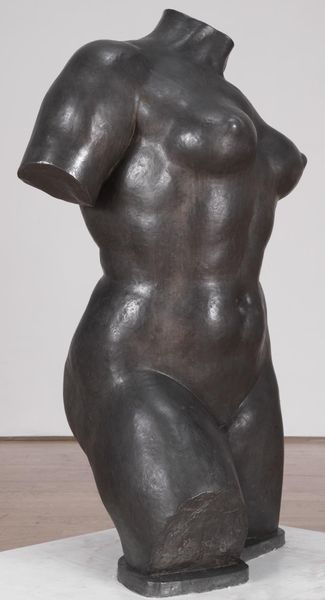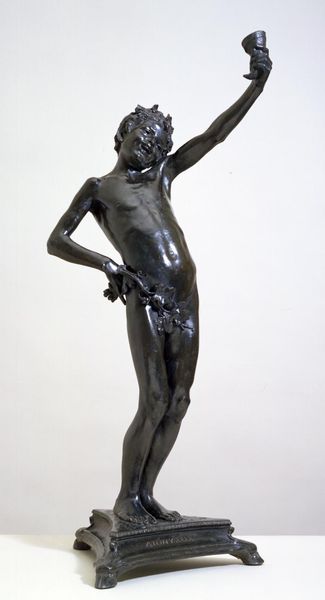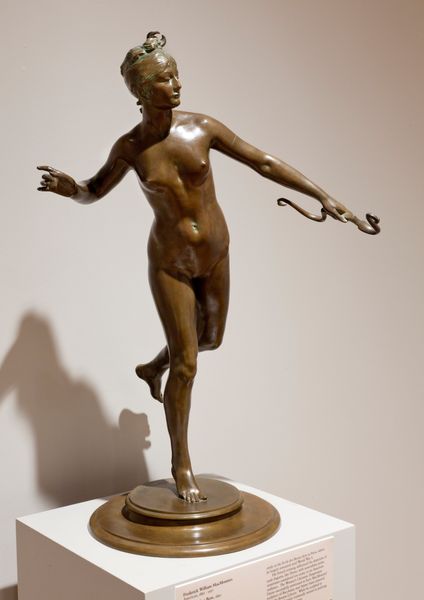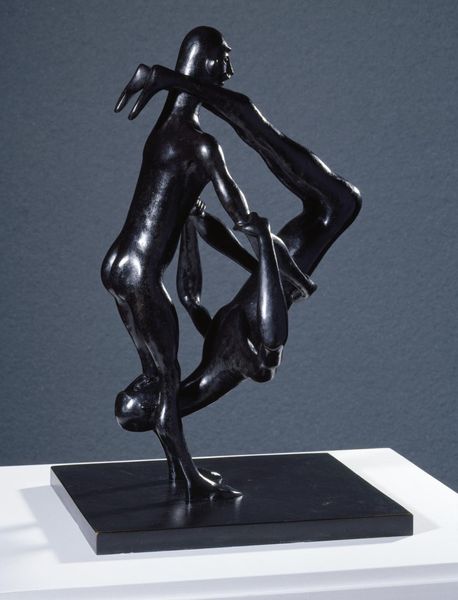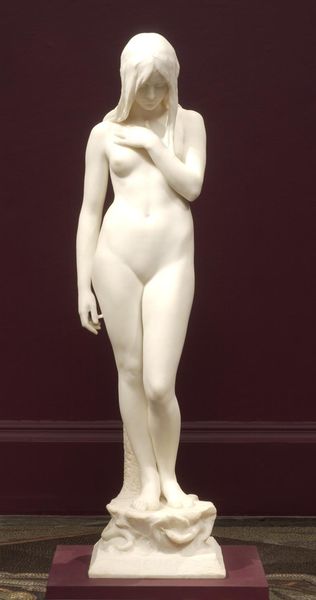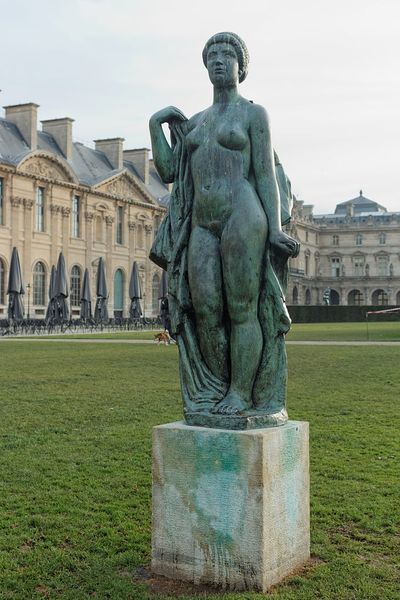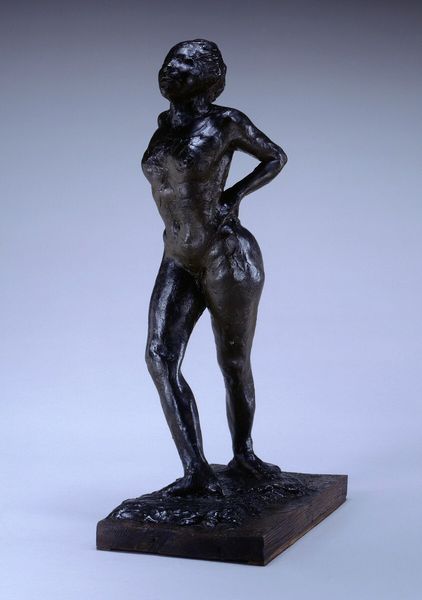
bronze, sculpture, site-specific
#
statue
#
art-nouveau
#
classical-realism
#
bronze
#
figuration
#
sculpture
#
site-specific
#
nude
Copyright: Public domain
Curator: Aristide Maillol’s "Pomone," created in 1910, stands before us, a bronze sculpture installed here as a site-specific artwork. The sculpture’s placement within the park reflects ongoing dialogues about how public art interacts with, and is shaped by, its surrounding environment. Editor: There's something immediately grounding about this figure. The weight, the sheer presence of her body…it emanates a sense of rootedness and enduring strength, like an ancient earth mother. Curator: That sense of enduring strength could connect to Maillol's conscious return to classical forms. After a period dominated by more avant-garde styles, there was a desire amongst some artists to recapture the perceived stability and harmony of the classical world, echoing ideas that supported emergent nationalistic cultural agendas. Editor: Indeed, and Pomone herself – the Roman goddess of fruitfulness – offers a fascinating image. See how her cupped hands offer what could be fruit, or perhaps an invitation. Fruit, of course, connects to cycles of nature, and can signify knowledge. It really comes down to the viewer's interpretation. Curator: Precisely. Consider also the context in which Maillol was working. This was a period marked by rapid industrialization and social change. Artists often turned to idealized visions of the past. Was this a strategy to offer reassurance in a time of great uncertainty? The sculpture certainly gained considerable public approval in those pre-war years. Editor: The pose evokes earlier depictions of Venus, and the open gesture – a presentation of self – does carry both sensual and innocent implications. The scale definitely enhances her imposing, timeless quality. It makes me consider what Maillol intended the viewer to feel when standing before this powerful image. Curator: It seems the sculpture functioned as both a symbolic attempt to invoke harmony and stability during societal flux, and an active player in shaping public artistic tastes. Its continuing presence allows us to re-evaluate what visual elements and classical themes are used to express collective cultural values, and perhaps even personal yearning, at particular points in time. Editor: For me, this Pomone represents a link between ancient ideas and modern experience. It's the emotional weight and cultural echoes imbued in the art piece, from the symbolic implications of offering cupped hands to its rooted-seeming permanence, that deeply resonate.
Comments
No comments
Be the first to comment and join the conversation on the ultimate creative platform.
